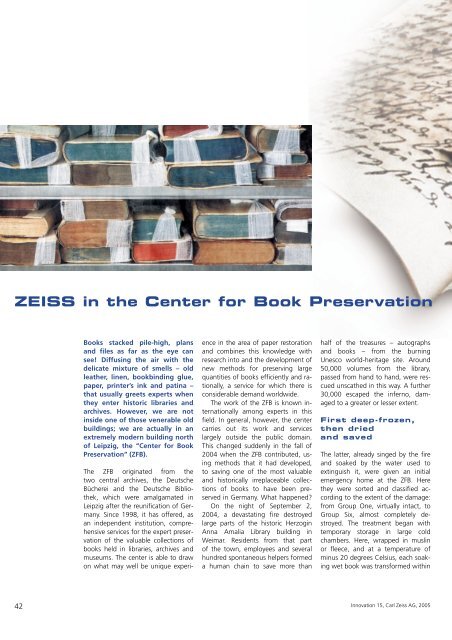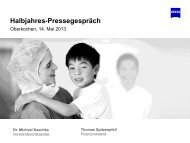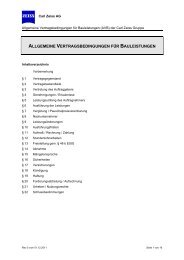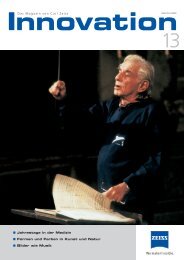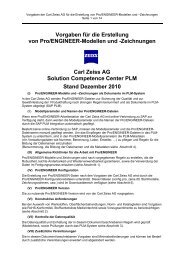Download PDF - Carl Zeiss
Download PDF - Carl Zeiss
Download PDF - Carl Zeiss
Create successful ePaper yourself
Turn your PDF publications into a flip-book with our unique Google optimized e-Paper software.
ZEISS in the Center for Book Preservation<br />
42<br />
Books stacked pile-high, plans<br />
and files as far as the eye can<br />
see! Diffusing the air with the<br />
delicate mixture of smells – old<br />
leather, linen, bookbinding glue,<br />
paper, printer’s ink and patina –<br />
that usually greets experts when<br />
they enter historic libraries and<br />
archives. However, we are not<br />
inside one of those venerable old<br />
buildings; we are actually in an<br />
extremely modern building north<br />
of Leipzig, the “Center for Book<br />
Preservation” (ZFB).<br />
The ZFB originated from the<br />
two central archives, the Deutsche<br />
Bücherei and the Deutsche Bibliothek,<br />
which were amalgamated in<br />
Leipzig after the reunification of Germany.<br />
Since 1998, it has offered, as<br />
an independent institution, comprehensive<br />
services for the expert preservation<br />
of the valuable collections of<br />
books held in libraries, archives and<br />
museums. The center is able to draw<br />
on what may well be unique experi-<br />
ence in the area of paper restoration<br />
and combines this knowledge with<br />
research into and the development of<br />
new methods for preserving large<br />
quantities of books efficiently and rationally,<br />
a service for which there is<br />
considerable demand worldwide.<br />
The work of the ZFB is known internationally<br />
among experts in this<br />
field. In general, however, the center<br />
carries out its work and services<br />
largely outside the public domain.<br />
This changed suddenly in the fall of<br />
2004 when the ZFB contributed, using<br />
methods that it had developed,<br />
to saving one of the most valuable<br />
and historically irreplaceable collections<br />
of books to have been preserved<br />
in Germany. What happened?<br />
On the night of September 2,<br />
2004, a devastating fire destroyed<br />
large parts of the historic Herzogin<br />
Anna Amalia Library building in<br />
Weimar. Residents from that part<br />
of the town, employees and several<br />
hundred spontaneous helpers formed<br />
a human chain to save more than<br />
half of the treasures – autographs<br />
and books – from the burning<br />
Unesco world-heritage site. Around<br />
50,000 volumes from the library,<br />
passed from hand to hand, were rescued<br />
unscathed in this way. A further<br />
30,000 escaped the inferno, damaged<br />
to a greater or lesser extent.<br />
First deep-frozen,<br />
then dried<br />
and saved<br />
The latter, already singed by the fire<br />
and soaked by the water used to<br />
extinguish it, were given an initial<br />
emergency home at the ZFB. Here<br />
they were sorted and classified according<br />
to the extent of the damage:<br />
from Group One, virtually intact, to<br />
Group Six, almost completely destroyed.<br />
The treatment began with<br />
temporary storage in large cold<br />
chambers. Here, wrapped in muslin<br />
or fleece, and at a temperature of<br />
minus 20 degrees Celsius, each soaking<br />
wet book was transformed within<br />
Innovation 15, <strong>Carl</strong> <strong>Zeiss</strong> AG, 2005


